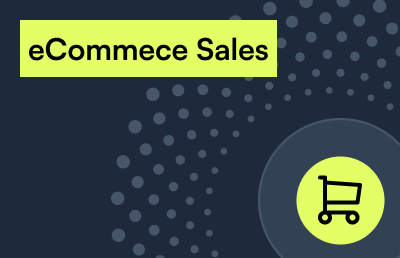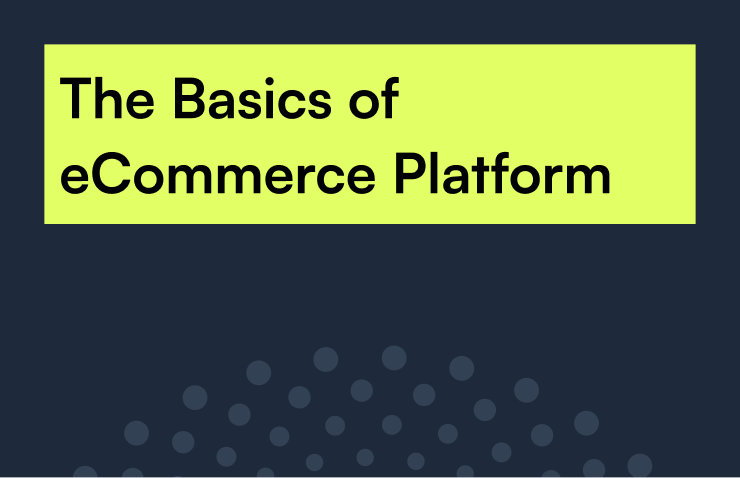The B2B ecommerce marketplace is rapidly changing.
The market is more complex than the B2C world—with massive online catalogs, complicated payment methods, and extremely diverse customer needs. There’s a layer of intricacy that’s not found in traditional consumer sales.
But if a company can get ahead of emerging trends and provide an optimal user experience, it’s possible to open up new revenue streams through B2B ecommerce.
The competition is fierce, and you need to do something to set your brand apart from the others. One way to do this is to observe trends sand give buyers exactly what they’re looking for when they view your ecommerce site.
Incorporating these trends into your B2B strategy will increase your competitive advantage and ultimately win the loyalty of B2B businesses looking for your product. To kick things off, let’s get a feel for the current B2B ecommerce landscape.
B2B Stats to Know
As with any task you want to succeed in, it’s important to educate yourself on the challenges ahead and what to do to overcome them. While not comprehensive, these stats show that B2B ecommerce trends are changing and businesses need to adapt.
- The B2B online retail market will reach over a trillion dollars within the next three years.
- Studies show that close to half of B2B buyers are millennials, nearly double the number from 2012.
- 80% of B2B brands have said that they prefer to make use of ecommerce sites along with any other channels available.
- The average order value of a B2B transaction is around $491 as opposed to B2C which is only $147.
- As many as 50 percent of buyers use mobile devices to shop for their business needs.
This barely scrapes the surface of B2B ecommerce statistics, but they illustrate our point: the marketplace is changing, and you need to start considering how to adapt.
5 Top B2B Ecommerce Trends
Customer expectations are rising in the B2B ecommerce market, and if you’re not prepared for a digital transformation then you may get left behind.
Take advantage of these trends to empower your ecommerce sales and start meeting the pain points of new and current customers alike.
Trend #1: Modernization of Systems Meets Open Source
The ability to go into your site and make edits also allows B2B companies to mix and match the features they’d like to offer on their site. Marketplace solutions may offer ease-of-use to B2C sellers or smaller B2B operations, but they rarely elevate to the level of sophistication needed by enterprise sellers.
Open source software comes with hundreds of add-ons to improve a site’s functionality, allowing for a more fluid and adaptable online presence. For B2B ecommerce, adding features for billing, credit card authorization, special group pricing and bulk orders is essential to win business-to-business deals.
Some merchants feel that open source technology has limited support, but there’s a broad community of users and developers who can offer insight at any moment’s notice.
Magento, for example, is well known for its robust B2B features and open-source capabilities. This type of platform allows merchants to mix and match the features they’d like to offer on their site. They will also have the flexibility to personalize their site to the unique needs of their clientele as well as to echo the look and feel of their unique brand. Add-ons such as special billing options, credit card authorization, inventory management, special group pricing, and bulk orders are all essential to win many B2B clients.
What may seem like a huge and complicated task certainly doesn’t have to be.
With the proper knowledge of the market and a quality ecommerce platform to support you, the addition of B2B features on your website can be smooth and easy. You’ll empower online sales, create a simpler order fulfillment process, and be able to clearly see your supply chain with real-time data. It’s an investment that you will thank yourself for in the long run.
Trend #2: Personalized, User-Friendly Shopping Experience
B2B sellers are quickly developing clean and streamlined design for their sites. It may just seem trendy to do this, but the redesigns are based on customer data showing that B2C like websites have greater influence on decision makers.
B2B customers are engaging with B2C marketing strategies – and winning customer loyalty can be as simple as meeting these expectations.
Many B2B buyers are used to being online shoppers in their personal lives, and when they visit a website to make a purchase for their business they bring their expectations with them. They want a clear buyer journey, clear search functionality, customer reviews, expansive billing options, and social media integration.
In order to compete in this ever growing market of B2B, your ecommerce site will need to be updated with easy to navigate web design and custom B2B features.
Whether that’s optimizing the site for smaller screens or creating a mobile app, B2B companies need to provide a functional purchasing platform from a smartphone or tablet. An eCommerce platform capable of high performance across smartphones, desktops, and tablets will allow you to capitalize on customer behavior and increase your B2B sales.
Trend #3: B2B Buyers Are Self-Educating and Self-Serving
With B2B transactions, products are often bought in bulk, and no consumer wants to purchase hundreds or even thousands of an item for their business unless the feel sure they know what they will be receiving.
Executive buyers need to know that the seller knows exactly what they’re talking about and can provide the resources to back up their knowledge, buying online may be a new venture for the company. If a B2B site can make the customer feel as if they’re seeing the product in person, they’ll likely have a successful sale.
Being aware of the importance of the omnichannel experience is another of the B2B ecommerce trends that shouldn’t be overlooked. As if replicating the customer’s in-store experience, you want all aspects of your brand to be voiced through each channel – including social media platforms, content marketing, and other online areas touching your customer experience. This will undoubtedly result in business-to-business repeat buyers.
In addition, a consumer should know just as much about your products as they would from walking through a brick-and-mortar store. Your online catalog should provide detailed product information, dimensions, photographs from every angle, instructional videos, technical documentation, and anything else that may help them to feel comfortable with the product they are buying.
Once all of this is set in place, you’ll want to ensure that your B2B commerce empowers self service, has detailed and easy-to-use order management, and repeat purchase functionality. It’s a tall order, but the juice is worth the squeeze.
Trend #4: Flexible Buying and Paying
Another aspect of B2B that is in high demand by consumers is the option for flexible payment plans.
Processing digital payments for business sales can be very tricky as B2B platforms open up a wide variety of payment forms. This includes purchasing via commercial cards, mobile wallets, PayPal, invoicing, e-checks, physical checks, or purchase orders.
Potential customers expect to be presented with many options when accessing your site, and not having done so may result in the loss of a sale at a critical stage of the customer journey. If these options are not already built into your eCommerce platform, integrations and modules should be implemented to accept invoicing, purchase orders, automated recurring billing and other corporate billing options.
Conclusion
Today’s B2B ecommerce landscape is changing, and many businesses are trying to sift through the noise and see what makes sense.
Knowing which features are most important to you is important, and making these decisions the right way can only come from doing some research on the B2B market- as well as your own industry.
Scope out the competition and take note of the features and functionalities available to buyers on their website.
Make use of B2B ecommerce trends in the market and how they are helping businesses thrive.
All of this will help you to create the best website possible for your brand.



